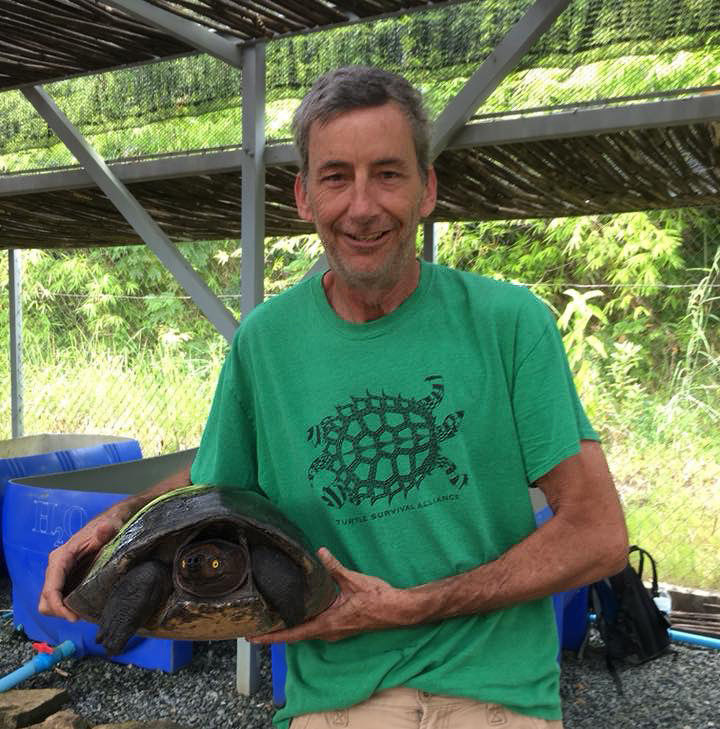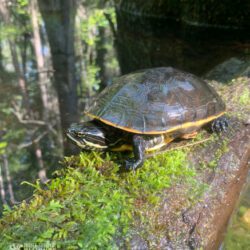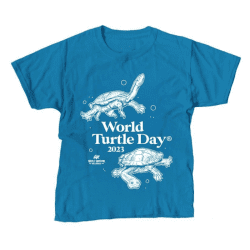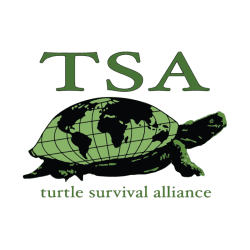Who: Jay Allen
What: Owner, Aquarium Innovations
Where: Monroe, Georgia, USA
Jordan Gray: What is your earliest childhood memory with a turtle or tortoise?
Jay Allen:¬†Because my father served in the U.S. Military, my family traveled a great deal. This exposed me to a variety of animals at an early age. I first became interested in reptiles when we lived in Panama, Central America. Spending time in the rainforests there offered a great opportunity to grow and learn. While there weren’t many turtles, the reptile interest stuck.
Our next family relocation took me from the rainforest to the reef when we moved to Miami Beach, Florida. This is where I had my first turtle sighting. Snorkeling was a daily event with my two older brothers, and it provided my first encounter with a Loggerhead Sea Turtle (Caretta caretta). He was small and young; probably 3 to 5 years old. I enjoyed watching it cruise along to forage on corals and anything else that came along. It was a very cool encounter for me as an 11-year-old.
JG: How did you first become involved in turtle and tortoise conservation?
JA:¬†After 30 years of working together on various exhibits, Greg George asked David Manser and I to come “hang out” with some turtle guys one day. TSA was in its third year of operation at the time, and off I went, unknowingly, to my first conference. Greg had planted a seed in both David and I, and it worked!
I really got involved with chelonian conservation efforts right before the grounds for the Turtle Survival Center (TSC) were purchased. At the time, I was working at a National Fish Hatchery in the area, and Rick Hudson invited me to go by and check the place out. It was perfect for what was needed. As Rick stated, “There’s a couple hundred thousand dollars’ worth of stuff here – this is a big WIN.”
I enjoy going to the TSC, and worked on the very first cleaning up of and infrastructure installation for the grounds there. Installing the plumbing system for the Forest Complex was totally brutal as it had rained so much that year. I have to give a shout out to Luke Wyrich and Theresa Stratmann. The three of us dug ditches, calf-deep in some good South Carolina mud, for the PVC plumbing installation. I have been plumbing for 30 + years and this was a very difficult, but extremely rewarding endeavor. Additionally, I have enjoyed working at the TSC with Nathan Haislip; we have gotten many things accomplished together for the center including, grinding and staining the conference room, pouring the floor for the quarantine building, and much more. For me, the TSA/TSC is a great way to give back; we need more of that in this day and age.
JG: What is your favorite species of turtle or tortoise to work with?
JA:¬†Batagur affinis, the Southern River Terrapin. This is Cambodia’s national reptile, and one of the most endangered freshwater turtles in the world. Brian Horne introduced me to this species in 2014 when he took me to several spots in Southeast Asia while scouting potential sites for a new conservation center (now the Koh Kong Reptile Conservation Center). We traveled to southern Cambodia, the Angkor Center for Conservation of Biodiversity (ACCB) in northern Cambodia, the Singapore Zoo, and Cuc Phuong, Vietnam. Once I personally saw this species’ need for help, I was hooked on saving this turtle. Plus, the males have beautiful golden eyes that you can’t help but love.
JG: Do you keep any turtles and tortoises, and if so, what type?
JA:¬†I currently have a few Musk (Sternotherus) and Common Map Turtles (Graptemys geographica) at my home. My collection has gotten smaller over the years as I’ve given most away to educational facilities including public aquariums. Scaling back on my home facility has allowed me to spend more time in the field. Whenever I need more time with turtles, I head over to the TSC and ask Nathan what needs to be done!
JG: What is your favorite aspect of building aquariums and terrariums?
JA:¬†I have always enjoyed the hands on aspect of the job, but my favorite is making the molds we use for exhibit props and rock work. I also enjoy learning about the habitat of the specific exhibit we are modeling for, especially when we’re in the field collecting props and taking photos.
The long-term educational value of my exhibits – knowing that these exhibits will be there (some after I’m gone) to teach future generations why we need to protect our animals and their habitats – is what makes me the proudest. My quote that embodies this is, “Start them young and they will come back to you.”
JG: Tell us about how you got involved with turtle conservation in Cambodia?
JA:¬†I fully blame that great gift on Dr. Brian Horne. He was giving a lecture on the Batagur genus at a conference and explaining the immediate need to save these special turtles. I literally knew nothing, but Brian and Dwight Lawson explained the crisis to me, told me how the TSA and the Wildlife Conservation Society (WCS) were involved in efforts for their survival, and I was in. I have now been to many parts of the Upper Mekong River in Cambodia, and I’ve also worked several times at the Angkor Center for Conservation of Biodiversity. My conservation work in Cambodia is also special for me because both of my daughters have traveled there with me to get involved. Margaux, my youngest, and I both love helping at the ACCB, and Shelby, my oldest, came with me on my first trip to the old WCS Batagur facility to fit the first satellite transmitters on the turtles. I am looking forward to my fourth year of traveling there and to the new Batagur facility in Koh Kong.
JG: What attracted you to become part of the Turtle Survival Alliance?
JA: After building exhibits for years, it was just a perfect way to give back and save the most endangered turtles in the world. Everything I have learned through the many conferences attended has been a helpful addition to my career. In all of my experiences with non-profits over the years, the TSA has been the most rewarding.
JG: What advice would you give to an aspiring chelonian conservationist?
JA:¬†”Start them young and they will come back to you.” Education is the key component of conservation. Without educating the people, the turtles don’t stand a chance. We can never give up on the animals or the cause.









